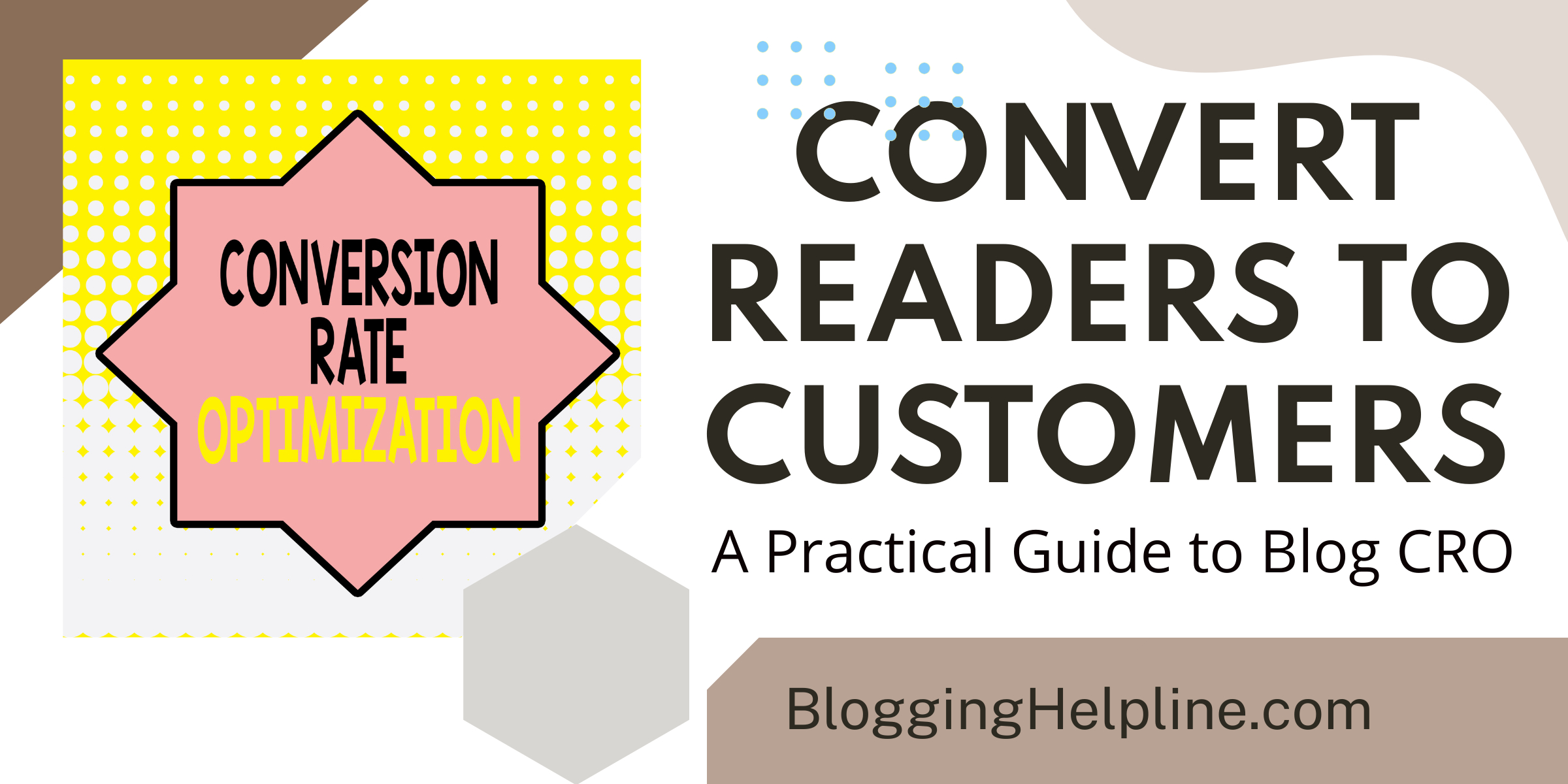Table of Contents
- What is Conversion Rate Optimization?
- Why is Blog Conversion Rate Optimization Important?
- Identifying Your Blog’s Conversion Goals
- Understanding Your Blog’s Audience
- Optimizing Your Blog’s Design
- Creating Content That Converts
- Optimizing Your Blog’s CTAs
- Using A/B Testing to Improve Your Conversion Rates
- Conclusion
Blog Conversion Rate Optimization: A Practical Guide
Are you struggling to convert your blog readers into customers or subscribers? This is a common problem among bloggers and content marketers, but there are solutions to increase your blog’s conversion rates. In this guide, we’ll give you practical tips and strategies to optimize your blog’s conversion rate.
What is Conversion Rate Optimization?
Conversion rate optimization (CRO) is the process of improving the percentage of website visitors who take a desired action. In the context of blogging, this means increasing the number of readers who become subscribers, customers or engage with your content.
Why is Blog Conversion Rate Optimization Important?
Conversion rate optimization is important because it helps you make the most of your blog’s potential. By optimizing your blog for conversions, you can increase the number of leads or sales generated from your blog. This means more revenue and profitability.
Identifying Your Blog’s Conversion Goals
Before you can optimize your blog for conversions, you need to identify what you want your readers to do. Here are some common conversion goals for blogs:
- Subscribe to your email list
- Download a lead magnet
- Make a purchase
- Share your content on social media
- Leave a comment
Understanding Your Blog’s Audience
To optimize your blog for conversions, you need to understand your audience. By knowing your audience, you can create content that resonates with them and drives them to take action. Here are some ways to understand your blog’s audience:
- Analyze your blog’s traffic data
- Conduct surveys or polls
- Use social media analytics
- Pay attention to the comments and feedback your readers leave on your blog
Optimizing Your Blog’s Design
The design of your blog can have a significant impact on its conversion rate. Here are some design elements to consider when optimizing your blog:
- Simple, easy-to-read fonts
- Clear and concise headlines
- Eye-catching images
- A clean and uncluttered layout
- A clear call-to-action (CTA) that stands out
Creating Content That Converts
To convert your blog readers, you need to create content that resonates with them. Here are some tips for creating content that converts:
- Use persuasive language that speaks directly to your readers
- Focus on benefits rather than features
- Use storytelling to connect with your readers emotionally
- Use data and case studies to back up your claims
- Include CTAs throughout your content
Optimizing Your Blog’s CTAs
The call-to-action (CTA) is the most important element on your blog when it comes to conversion rate optimization. Here are some best practices for optimizing your blog’s CTAs:
- Use contrasting colors to make your CTAs stand out
- Place CTAs above the fold
- Use clear and action-oriented language
- Create urgency with time-limited offers
- Test different CTAs to see what works best
Using A/B Testing to Improve Your Conversion Rates
A/B testing is a process of comparing two versions of a web page or CTA to see which one performs better. Here are some tips for using A/B testing to improve your conversion rates:
- Test one element at a time to isolate the impact of each change
- Run tests for a sufficient amount of time to gather statistically significant data
- Use A/B testing tools like Google Optimize or Optimizely to automate the process
- Prioritize the tests that have the potential to have the biggest impact on your conversion rate
Conclusion
Optimizing your blog’s conversion rate is an ongoing process that requires testing, analysis, and continuous improvement. By understanding your audience, creating valuable content, and optimizing your CTAs, you can maximize the potential of your blog and achieve your conversion goals.
